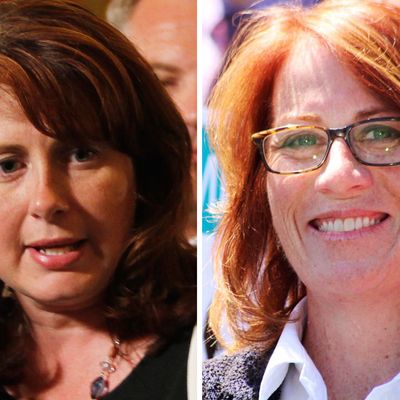
The attention of the national political chattering classes, riveted on the fight for control of the U.S. House in 2018, is only beginning to focus on the 36 gubernatorial elections being held in November. These races matter a great deal, in part because they affect actual life conditions more than most congressional contests, and in part because they will significantly influence the next decennial round of redistricting after 2020.
The partisan landscape of gubernatorial races skews Democratic, with only nine Democratic-held seats (plus one independent aligned with Democrats, Bill Walker of Alaska) up in November, as opposed to 26 Republican-held seats. Down-ballot Democrats could benefit from a national Democratic wave election nearly as much as congressional candidates. The party controlling the White House has lost net governorships in 14 of the 18 midterm elections since World War II, and in the first midterms after a president takes office, the White House party has lost an average of five net governorships. Such losses tend to be particularly severe when the White House party begins the midterm cycle with a lot of governorship (e.g., in 1970, when Republicans lost half of the 22 governorships at stake, an exposure created in part by a boffo 1966 GOP cycle).
But aside from probable Democratic gains, the most interesting thing about the gradually forming gubernatorial landscape for 2018 is the impressive number of women running for state chief-executive positions, as Karen Tumulty reports:
This year, at least 79 women — 49 Democrats and 30 Republicans — are running for governor or seriously considering it as filing deadlines approach, according to a tally by the Center for American Women in Politics at Rutgers University.
The numbers are more than double what they were four years ago and on track to surpass the record 34 women who ran for governor in 1994.
There are currently six women serving as governors, four Republicans and two Democrats. Two of the Republicans (Susana Martinez of New Mexico and Mary Fallin of Oklahoma) are term-limited this year. The 79 women who are potentially running in 2018 come from 31 states. Some are clustered in particular places: the CAWP list shows eight women (four Democrats and four Republicans) considering the gubernatorial race in Minnesota, and six (including five Democrats) in Maine. It is far too early to project how many of these women might win party nominations or general elections, but the odds that we’ll wind up with more than six female governors in 2019 are quite high. And the broad pool from which they will be drawn is significant in itself.
While this expansion of the number of women running for governor is (particularly on the Democratic side) partly attributable to the dynamics unleashed by the 2016 election and its aftermath, some of these women may have to deal with the belief (obviously given some credence by Hillary Clinton’s upset loss last year) that all things being equal voters tend to prefer men in executive positions. In some states, there may even be a perceived “glass ceiling,” though 28 states have elected a total of 39 women to governorships, beginning with Nellie Tayloe Ross of Wyoming in 1924. The number of women serving as state chief executives has not, however, steadily climbed: The largest number serving at any particular time – nine – was achieved in 2004 and again in 2007.
Given the preponderance of Democrats among the women running this year and the likelihood of serious Democratic gains, we’ll probably see an increase if not a record in women serving as governors in 2019. Some may become national stars and join current or former elected officials Elizabeth Warren, Kamala Harris, Kirsten Gillibrand, Amy Klobuchar, and Nikki Haley, or non-elected figures Oprah Winfrey, Michelle Obama, and Condoleezza Rice, as women who are often mentioned as successors to Hillary Clinton in the quest to become the first woman to serve as president. Depending on the numbers, 2018 could be another one of those electoral “Years of the Woman” that are periodically predicted with mixed results. Thanks to The Reckoning over sexual harassment and the reaction of so many women to Donald J. Trump, there could even be a gender as well as a partisan “wave” in 2018, not least among the governorships. At the very least, to paraphrase Mitt Romney, we could see “binders full of women” applying for these executive jobs.






























